The flag of Bosnia and Herzegovina is more than just a piece of fabric; it’s a symbol that encapsulates the complexities and diversities of the nation it represents.
Introduced in 1998, the flag has become a source of national pride, standing as a visual testament to the country’s journey toward unity and progress. This article delves into this captivating national emblem’s intricate details and meanings.
Bosnia and Herzegovina Flag
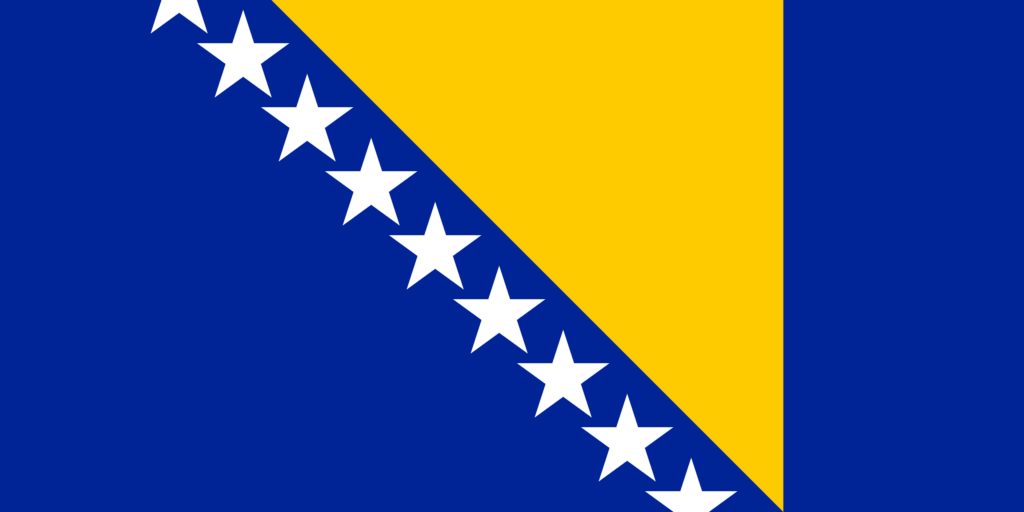
The flag of Bosnia and Herzegovina consists of a blue background, a yellow isosceles triangle, and a line of white five-pointed stars that run diagonally from the upper fly side to the lower hoist side.
The arrangement of these elements was chosen to create a unique emblem representing the nation’s three major ethnic groups. The design aims to foster a sense of unity among its diverse population and carve out a distinct identity for the country on the global stage.
Bosnia and Herzegovina Flag: Color Palette
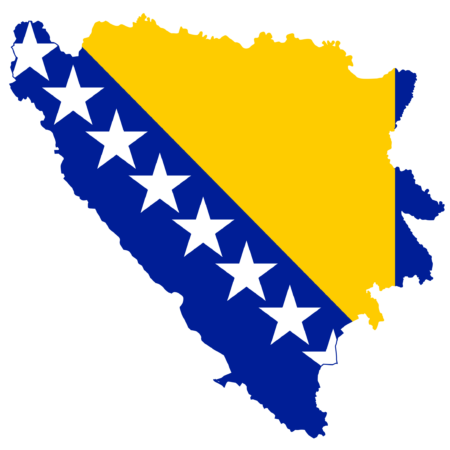
Bosnia and Herzegovina Flag Emoji: 🇧🇦
The color palette of Bosnia and Herzegovina’s flag is striking and meaningful, featuring blue, yellow, and white. These colors were carefully selected for visual harmony and their capacity to convey more profound messages about the nation.
This trio of colors works in concert to create an emblem that captures both the eye and the imagination. As we unpack the symbolism of each color, you’ll see how they collectively tell a story that is uniquely Bosnian and Herzegovinian.
Meaning of Each Color
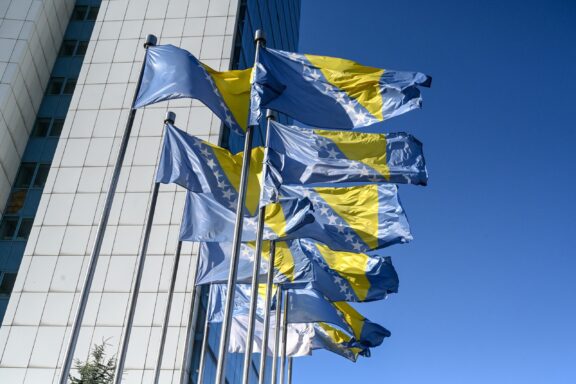
Blue
The blue hue on the flag, traditionally associated with Bosnia’s culture and history, symbolizes neutrality and peace. This color also echoes the flag of the European Union, indicating Bosnia and Herzegovina’s affiliation with Europe.
The blue backdrop underscores the nation’s past challenges and its continuing journey toward peace and stability.
Yellow
The yellow triangle on the flag geometrically represents the country’s three main ethnic groups: Bosniaks, Croats, and Serbs, mirroring Bosnia and Herzegovina’s geographic outline.
Although yellow is often associated with optimism and prosperity in broader contexts, the color mainly symbolizes the unity of these ethnic groups within the country.
White
The white stars adorning the flag symbolize Europe, aiming to depict a sense of coexistence and continuity.
While white is generally associated with purity and new beginnings, in the context of this flag, it primarily serves to illustrate Bosnia and Herzegovina’s commitment to fostering harmony among its citizens.
Bosnia and Herzegovina Coat of Arms
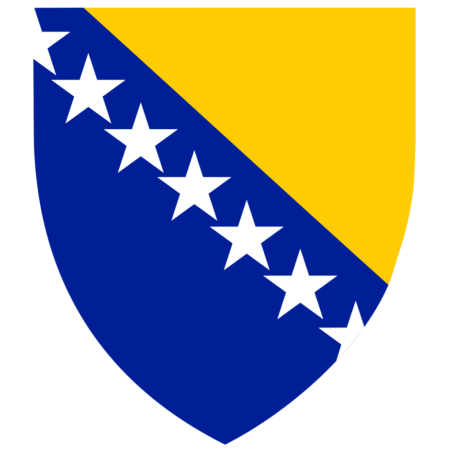
The coat of arms of Bosnia and Herzegovina mirrors the design elements of the national flag. It features a blue and yellow background with seven white, five-pointed stars on a blue field.
Unlike traditional heraldic emblems, this modern design emphasizes accordance and coexistence, reflecting Bosnia and Herzegovina’s aspiration for harmony among its populace.
Through this design, the coat of arms accentuates the overarching themes of peace and shared community in the flag.
Historical Evolution and the Meaning Behind Changes
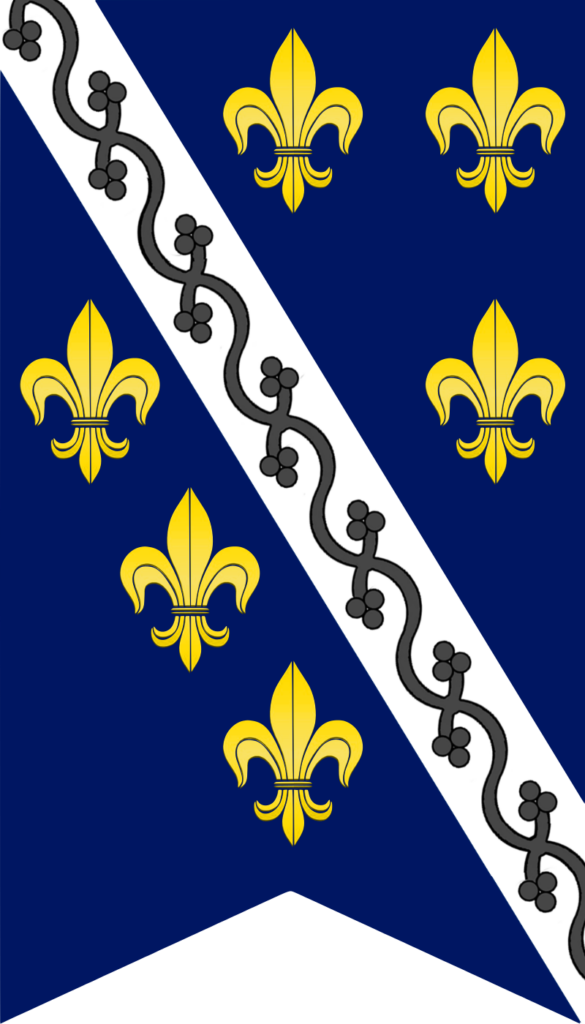
The flag of Bosnia and Herzegovina has undergone significant changes, particularly in the country’s turbulent history. Before the current design, the nation had different flags representing its shifting political and social landscapes.
Before independence, Bosnia and Herzegovina was part of Yugoslavia, and its flag was influenced by socialist symbolism. The design featured a red field with a blue shield and fleur-de-lis, representing the medieval Bosnian state.
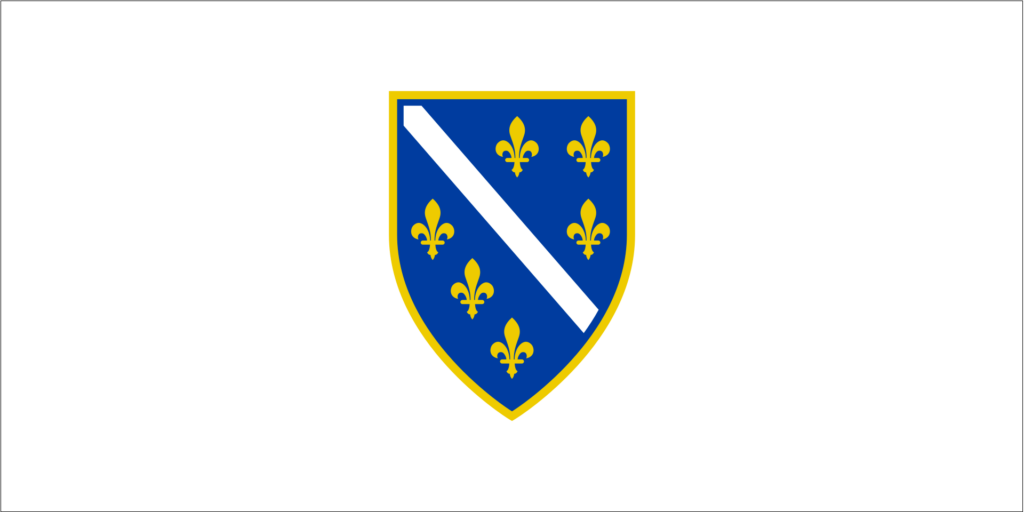
The current flag was a break from the past. The switch to a more inclusive design was a conscious decision to move away from ethnic-specific symbols to represent a unified Bosnia and Herzegovina better.
These changes in flag design mirror the country’s complex history and ongoing efforts to forge a more inclusive identity. Each iteration reflects a particular period in the nation’s timeline, capturing the prevailing sentiments, challenges, and hopes of those times.
Overall Symbolic Meaning of the Flag
The flag of Bosnia and Herzegovina serves as a harmonizing emblem that seeks to bridge the diverse ethnic and cultural components of the nation.
Its design employs abstract and universal symbols to foster a sense of collective identity, sidestepping any specific ethnic or historical references. Doing so becomes a canvas upon which all citizens can project their shared goals for peace and a united future.
Overall, the flag aims to be inclusive, embodying the nation’s quest for cohesion and mutual respect among its people.
Similar Flags to the Flag of Bosnia and Herzegovina
The flag of Bosnia and Herzegovina bears some similarities with other flags, though these resemblances are mostly coincidental rather than a result of shared history or cultural exchange.
European Union
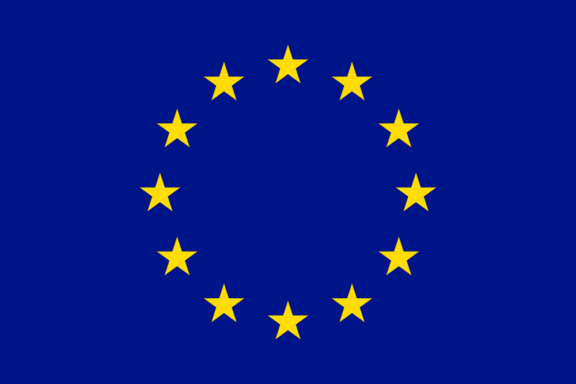
While not a country, the European Union’s flag also features a circle of stars against a blue field. This visual similarity reflects Bosnia and Herzegovina’s aspirations for European integration.
The flag features a circle of stars against a blue background, symbolizing unity among its member states. This is a principle that Bosnia and Herzegovina also aims to convey with its flag, albeit through different symbols.
Kosovo
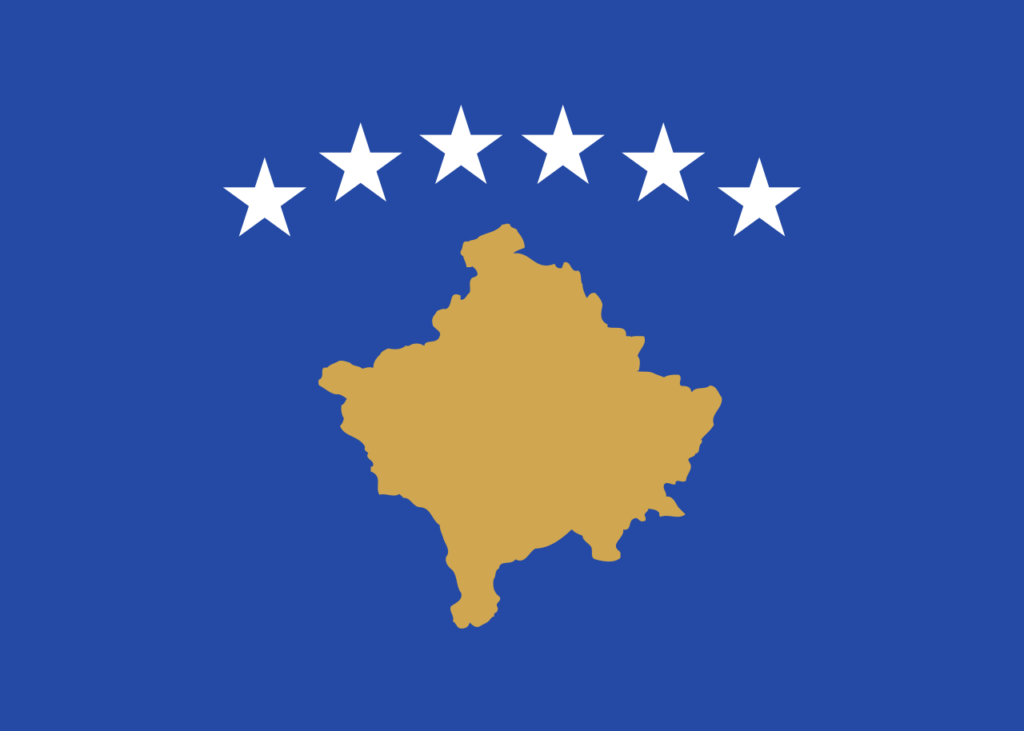
Kosovo’s flag also employs stars and a blue field but with different arrangements and symbolism. While both flags aim for unity among diverse populations, the similarities are unrelated to shared history.
The flag of Kosovo includes stars arranged in a manner that somewhat resembles the map of Europe. This design can indicate Kosovo’s desire for European integration, a goal also shared by Bosnia and Herzegovina.
Marshall Islands
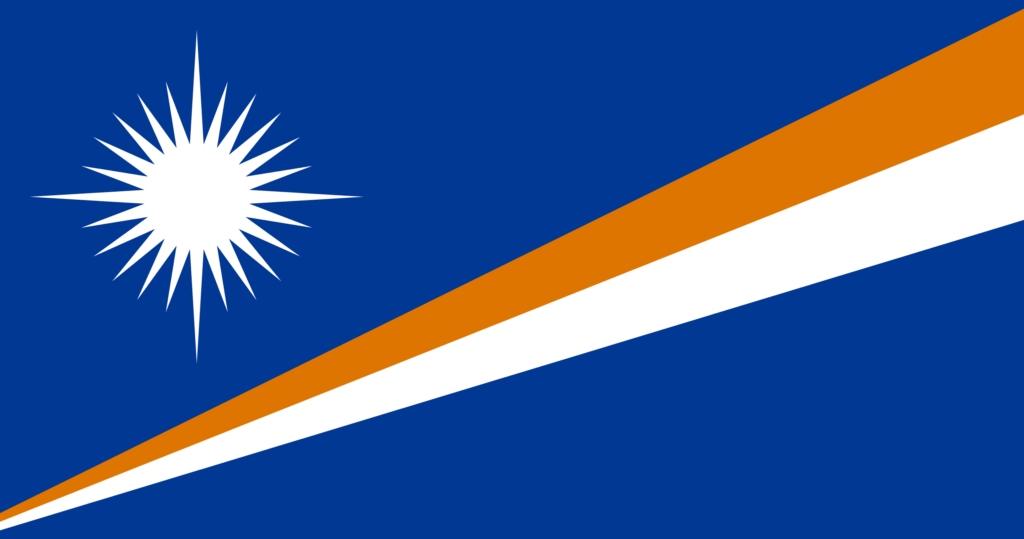
The Marshall Islands flag also features a blue field, commonly used to symbolize water or the sky. Like Bosnia and Herzegovina’s flag, it opts for abstract and universal symbols, such as stripes and a star, to convey its national message.
However, the similarities between the two flags are more a matter of design elements than shared history or cultural ties.
Conclusion
The flag of Bosnia and Herzegovina is a complex emblem that encapsulates the nation’s diverse identity and future goals. Distinct yet connected to other global flags, it is a powerful symbol for its citizens, encapsulating their collective values and aspirations.
In essence, the flag acts as a mirror and a compass, reflecting the nation’s multifaceted character while pointing toward a united future.
Image Sources and Copyright Information
- Bosnian Flags in Front of Parliament Building: © Ajdin Kamber/Shutterstock